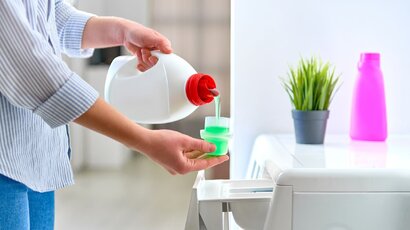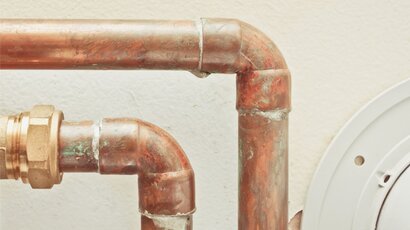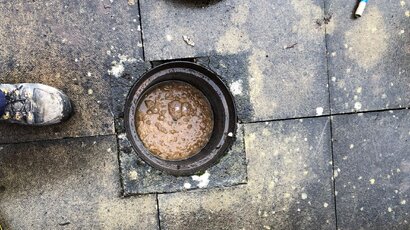Unblock Laundry Drains Fast
Clogged laundry drains can disrupt your routine and lead to water damage. Learn simple and effective ways to tackle the issue and prevent future blockages.
Did you know that blocked drains rank among the most common plumbing issues in Australia? Many of these cases involve clogged laundry drains, leading to inconvenience and potential home damage. Knowing how to tackle this issue is crucial for keeping your laundry area both functional and hygienic.
This guide delves into practical and effective ways to clear blocked laundry drains. Whether you’re dealing with minor blockages or more serious clogs, these straightforward solutions will keep your laundry routine seamless.
Clogged laundry drains can be frustrating, but knowing the usual culprits can help prevent them. Various factors contribute to this problem, each posing unique challenges.

Each cycle your washing machine runs produces lint, and without proper filtering, this debris ends up in your drains. Over time, the accumulation of lint narrows pipes, restricting water flow.
Detergents and soaps can leave sticky residues clinging to the inside of your pipes. Over time, these layers attract additional particles, gradually forming stubborn blockages.
Loose hair and pet fur can easily wash down the drain and combine with lint or soap residues, quickly leading to severe clogs in homes with multiple occupants or pets.
Small items like coins, tissues, and buttons, often forgotten in pockets, can slip into the drain, leading to obstructions. Even seemingly trivial objects can disrupt water flow significantly.
Older or damaged pipes tend to develop rough surfaces or cracks. These imperfections trap debris, making it easier for blockages to form over time. Proper maintenance and modern materials reduce the risk of recurring issues.
Noticing the early signs of a clogged laundry drain can prevent larger problems down the line. Paying attention to these indicators truly makes a significant difference.

Clearing a clogged laundry drain can often be managed withsimple DIY methods. These approaches are straightforward and effective for resolving common blockages.
Tackling severe blockages calls for advanced methods to ensure effective results. These techniques are designed to deal with tough clogs that simpler approaches just can’t handle.
A wet/dry vacuum can create strong suction to remove debris stuck deep within the pipes. Secure the vacuum’s hose tightly to the drain, switch it to suction mode, and let it pull out the clog. This method works well for retrieving larger or compacted obstructions.
These products can break down tough buildups, but they should be used cautiously. Always follow the instructions carefully, wear protective gloves, and avoid mixing chemicals. This option is best suited for clogs caused by grease or organic matter. Avoid overuse, as harsh chemicals may damage pipes.
Removing and cleaning the U-bend or trap under the sink is an effective way to deal with severe blockages. Place a bucket underneath to catch water, unscrew the fittings carefully, and remove the debris inside. Once cleaned, reassemble the pipe securely to prevent leaks.
This professional-grade method uses high-pressure water jets to clear debris and clean the inside of the pipes thoroughly. It is particularly effective for stubborn grease clogs, tree roots, or mineral build-up and ensures long-lasting results.

Keeping your laundry drain free of clogs requires a combination of smart practices and regular maintenance.
Some blockages demand professional expertise to resolve them effectively and without further damage.
If basic DIY methods fail, the issue may lie deeper in the drainage system and require professional assessment.
Frequent blockages indicate an underlying problem that needs expert attention. Professionals can identify and address the root cause to prevent future issues.
Deeper problems, such as sewer line damage or tree root intrusion, are beyond the scope of home fixes. Plumbers have the expertise to handle these complex situations safely.
Routine checks by professionals help catch minor issues before they become major problems, saving time and money in the long run.
Plumbers use advanced tools, including hydro-jetters and camera inspections, to diagnose and fix drainage problems with precision and efficiency.
Struggling with blocked laundry drains can be frustrating and time-consuming. While DIY solutions might work for minor issues, severe or recurring clogs require professional expertise. AtWP Plumbing, we offer comprehensive services tailored to address all types of drainage problems.
Our team of licensed plumbers is equipped with advanced tools and years of experience to resolve your laundry drain issues efficiently and effectively. From hydro-jetting to pipe replacement, we ensure your drains are functioning smoothly.
Don’t let a clogged drain disrupt your routine. Contact WP Plumbing today for prompt and reliable blocked laundry services. Our team is here to help restore convenience and peace of mind to your home.
Certain detergents can lead to stubborn laundry drain blockages, causing slow drainage and plumbing issues. Learn how these products affect your pipes and what you can do to prevent costly repairs.
If your toilet flushes slowly, makes gurgling noises, or refuses to clear properly, a blocked drain might be the culprit. This blog uncovers how clogged plumbing can affect your toilet’s performance, what warning signs to watch for, and how to stop small issues turning into major headaches. Whether
Blocked drains can turn any day into a headache, but you don’t always need harsh chemicals or a plumber on speed dial. Using pantry staples, it’s possible to clear mild drain blockages at home, saving you money while avoiding strong chemical smells. Learn which easy home remedy works, what not to po


